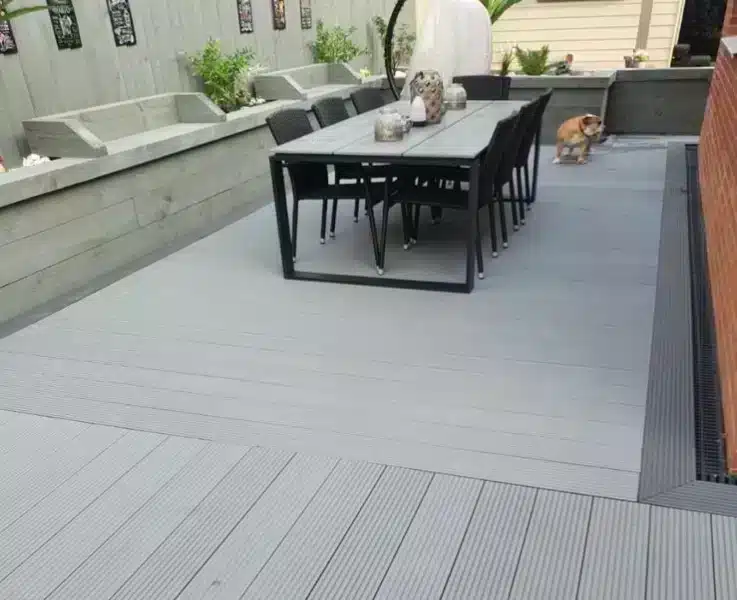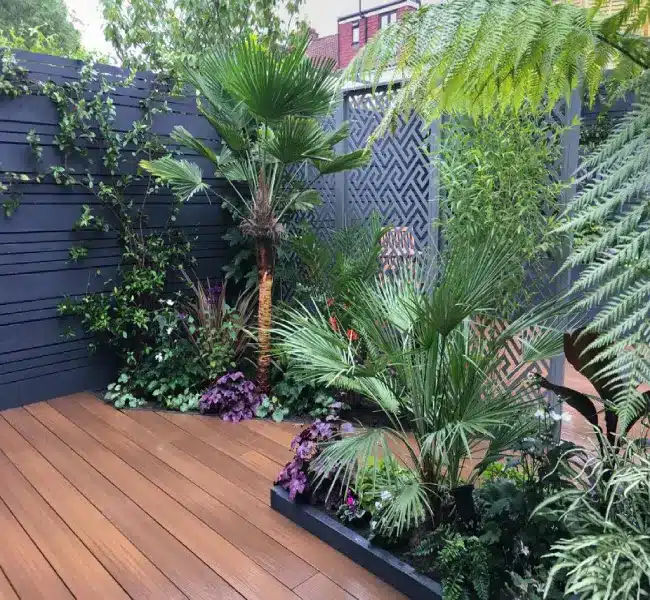Small Garden Ideas Without Grass
When you’re building a decking area from composite boards, you will want to prepare and plan as much as possible. It may be difficult for beginners, but it is doable. One of the things that you may want to take note of is decking board spacing. Why do you need to space your boards? How wide of a gap should you leave between the decking boards? Read on to learn the answers.
Decking Spacing and Why it’s Important
When you install composite decking, especially if you go down the DIY route, you have to remember to leave a gap between composite decking boards. Many people who try to build decking for the first time often forget about this crucial detail. Why is it critical?
There are two main reason for leaving gaps between decking boards. One of the main problems with decking is the expansion and contraction of the boards. Decking expands in the heat and contracts in the cold; therefore, when installing, close attention must be paid to the weather conditions during the installation.
All boards will expand when exposed to high temperatures. If the gap left isn’t big enough the pressure from expansion can cause the decking to crack, spilt, twist, wrap or even pull away from your decks structure. Therefore when installing in the cold or heat different gaps must be left.
The second reason is swelling and shrinking due to moisture. Shrinking is more of an issue with wood, in our experience the only issue in relation to moisture with composite is swelling. This issue is when not enough gap is left, and the boards swell leaving no gaps and creates pooling of water on your deck. This doesn’t tend to raise as a minor issue until the later stages in your deck live and over time the boards cracks.
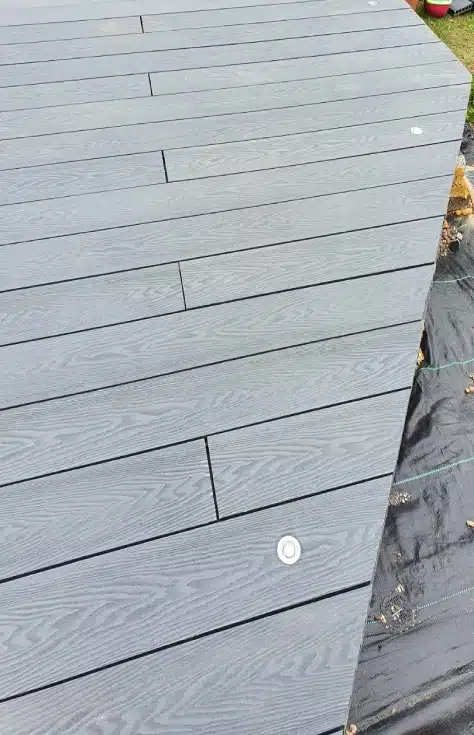
Water Drainage
Aside from that, decking boards that are too close to each other don’t drain water as fast as boards that have sufficient spacing. When cleaning the decking, dirt, pollen, and debris can also get stuck in between the tight spaces of your decking boards which will promote the growth of mould and mildew.
For all the reasons mentioned above, leaving gaps in between your decking boards is critical. It can either damage your decking or preserve its life. Include the correct spaces or gaps between the boards, as this will improve your decking’s airflow, water drainage, durability and ease of maintenance.
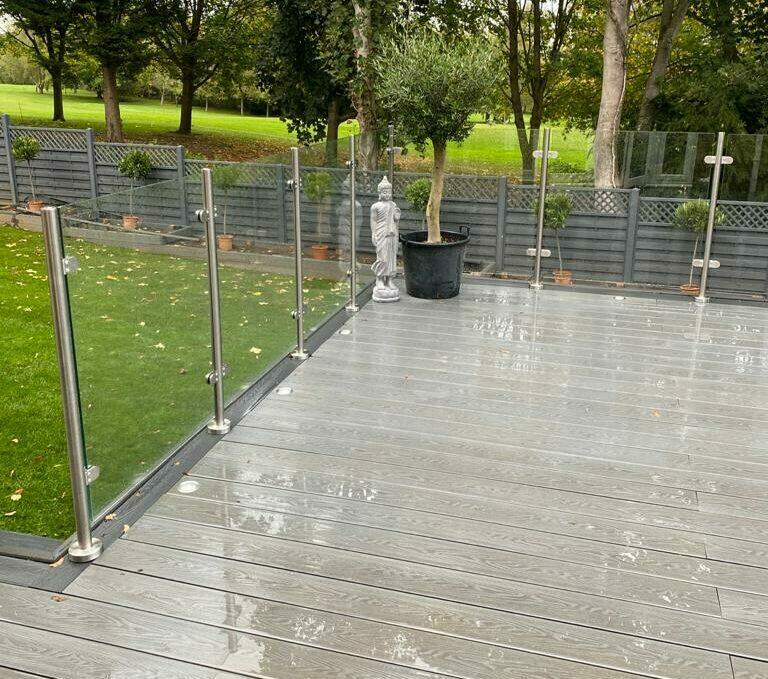
To Preserve the Decking
When water is left, the decking is exposed to moisture; the boards can absorb moisture. If they do, the boards will swell. The truth is, most wooden boards will swell or shrink regardless. On the other hand, composites do change in size, but to a lesser extent. Temperature and humidity cause these boards to shrink or swell.
The expansion of the boards have issues associated with it. First, it may remove the screws and nails used to fasten the decking. This can make the decking unsafe and unstable. Furthermore, it can be detrimental to the decking’s lifespan. Finally, the expanded boards can cause friction and pressure on each other. This pressure will lead to the boards protruding upwards.
Another reason why it’s crucial to have proper spacing is ventilation. Without the gaps, the vapour that rises from the ground beneath the decking will be stuck. Because of this, moisture will accumulate under the decking. As previously mentioned, moisture is a major problem for decking boards.
While these problems occur more often on wooden boards, it doesn’t mean they won’t happen on composite decking boards. True, composites are more resistant to moisture and warping. However, it’s still wise to prevent it from happening.
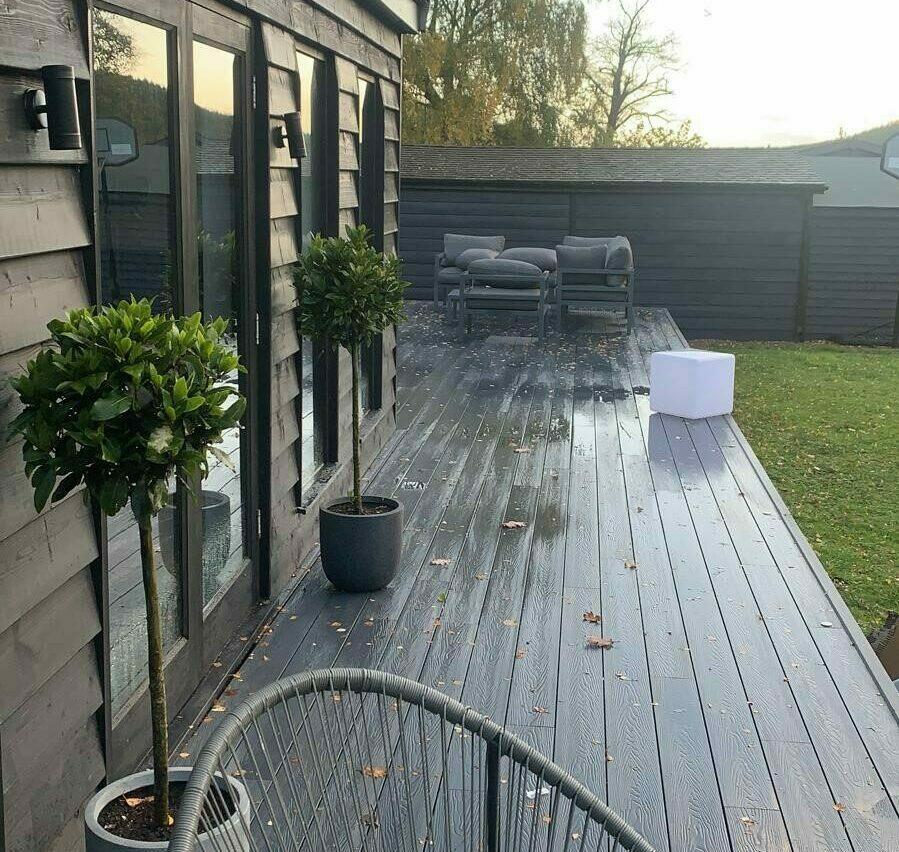
For Safety
Spacing out your decking boards can make your decking safer in so many ways. For instance, if you don’t have space, as previously mentioned, there might be water puddles on your patio. Not only is it a threat to your decking, but it is also a danger to you and your family. Some decking can become very slippery when wet.
Of course, you will need to put the correct width of gaps in-between the decking boards. Gaps that are too wide can also cause serious problems. For instance, decking with wider gaps is more likely to cause trips and falls as it is often harder to walk on, in our early days when discussing projects with hotels or restaurants this is something they raised, especially with the example of a women’s heel getting stuck between the gaps. So the question is, how wide of a gap should you place between the decking boards?
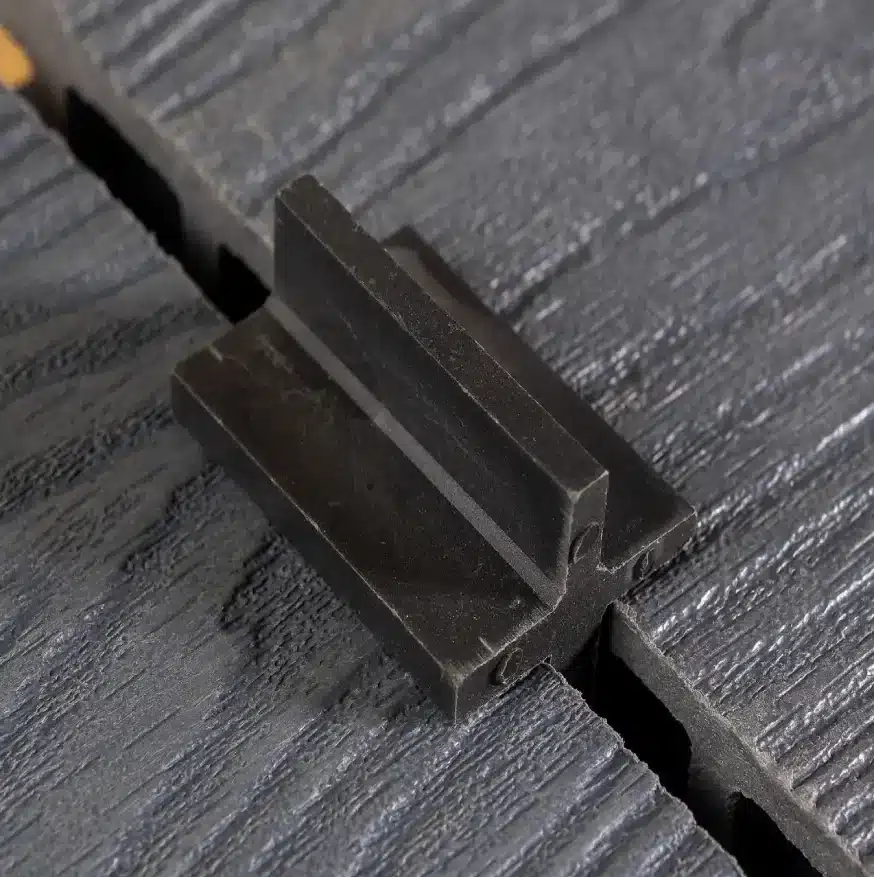
How to Space Your Decking Boards Properly
Weather conditions can affect your decking board. In summer, during hot weather, composite decking boards will expand. If there are no spaces/gaps between the decking boards, it can lead to warping, even in extreme cases shifting the decking area from its original position or even cracking.
Therefore, leaving spaces between composite decking boards will allow for thermal expansion and help the boards to expand freely without touching each other and preventing damage.
The kind of fasteners you use for your decking can also affect the size gap between the decking boards. Composite decking uses a hidden fastener system with options of 3mm to 6mm spacing between the boards. These gaps take into consideration that the decking boards and substructure are correctly installed to the manufacturer’s specifications.
For wood decking, the recommendation is to use screws instead of nails to hold the wood decking boards in place. Screws will grip the decking stronger, thereby keeping the board in place when it expands and contracts.
There are two types of spacing for your composite decking boards, namely side-to-side spacing and end-to-end spacing. For side-to-side, you will need to put anywhere from 3mm to 6mm. As for the end-to-end spacing of composite decking boards, you need to have:
- 4mm above 25 °C
- 6mm below 25 °C
- 8mm below 10 °C
- 10mm below 1 °C
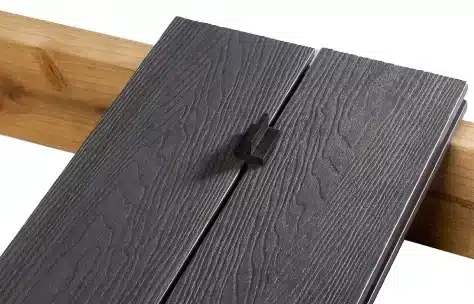
Installing Decking in Hot or Cold Weather Conditions
As previously mentioned, weather conditions do matter when determining the installation and gaps between the decking boards. If you are installing in the summer, it is important to allow the boards to climatise to the weather conditions at your location by allowing up to 48 hours for this. This means in hot weather, the decking boards will expand.
During installation in the summer months, you can leave a 4-6mm gap end to end, as the boards will most likely expand in warmer weather conditions.
In cold weather conditions, the reverse happens. The decking boards will contract and shrink, leaving a larger gap of 8mm, plus end-to-end is a must. This will allow the boards to expand again freely during the summer months. Hopefully, this will arrive sooner here in the U.K. If you decide to install below 0 degrees, then a larger gap upwards of 10mm would need to be included.
Please note many suppliers and manufacturers will advise against installing composite decking in very cold conditions.
Of course, not all composite decking boards are equal.
Because of this, you will need to consider how you’ll space the decking boards, including how large the gaps between the decking boards need to be. One of the things that you should also consider is how much the decking boards will expand and contract (shrink).
For instance, dark colours, such as grey composite decking boards, absorb more heat. When it comes to thermal expansion, they can increase in size faster than lighter-coloured boards. Depending on the brand you’ll be using, some may be more susceptible to expansion than others.
Lastly, when you are installing composite decking, you may need to consult with the board’s manufacturers. They can give you clear and concise instructions on the building process, including how much gap you will have to put in between the decking boards.
In any case, placing gaps between composite decking boards can either make or break your decking. So remember to follow any instructions on how to do them properly.
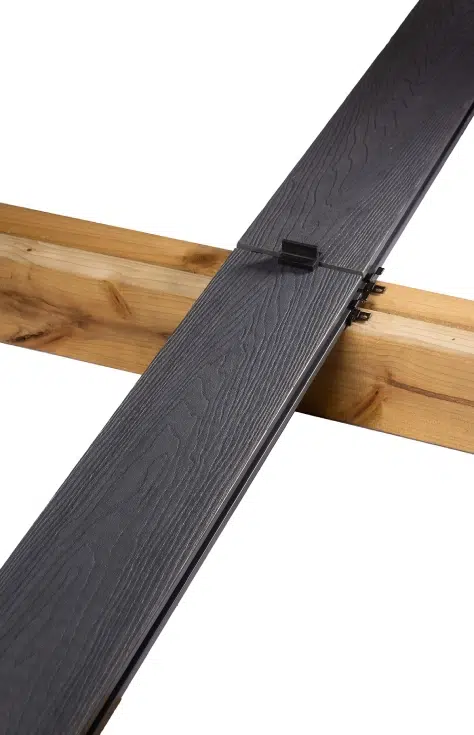
What is Better PVC or Composite Decking?



